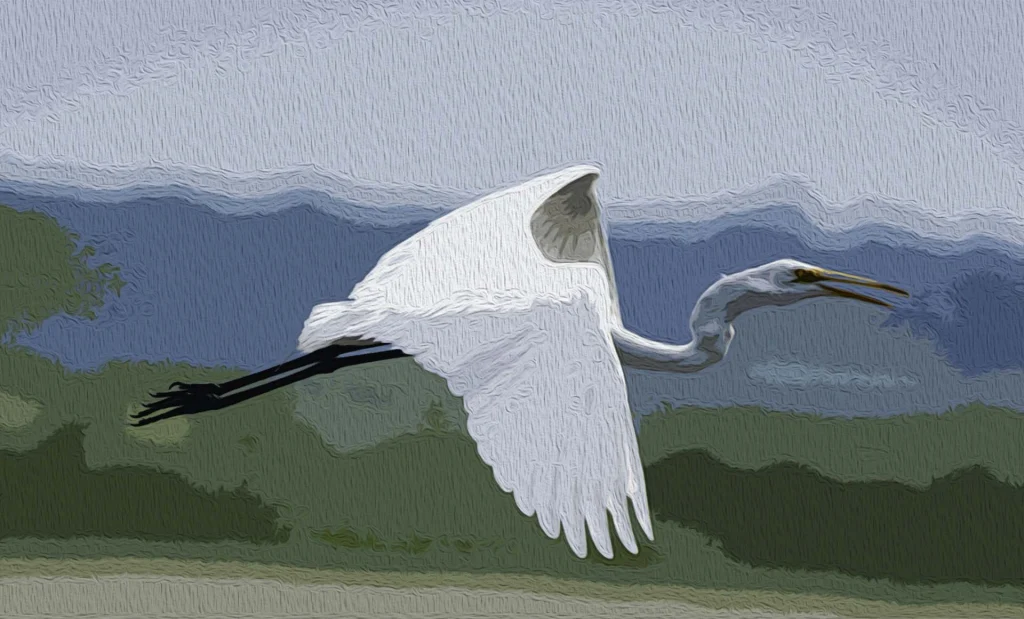Whistling wind, in a driving autumn rain
Clacking stones, stumbling on the shore
Waves leaping, crashing into each other
White egret startles, recovers, descends
Anyone who has experienced a transcendent moment in Nature understands that it is impossible to recreate it in words. Zen teaches us this. Still we try, we take a photograph, or as in this case, in words.
Wang Wei’s transcendental moment took place in autumn at the Luan Family Shallows during a driving rain, the kind that whistles and pounds the ground, filling the creeks, rivers, and lakes. Shallows (颯颯, Sàsà) here does double duty, describing the shallow area along the river bank where the egrets like to fish and the water breaks upon the rocks, but also serving as the sound of the whistling rain.
Wang Wei uses onomatopeia again in line 2 – 颯颯, Qiǎn qiǎn, the sound of water moving in the shallows. Here is an alternate translation:
swoosh swoosh, in the midst of the autumn rain
glug glug, a stone slips and slides in the shallows
jump, waves against each other, splashing
white egret startled, returning, descends
Chinese and Pinyin
颯颯秋雨中
淺淺石溜瀉。
跳波自相濺
白鷺驚復下
Sàsà qiūyǔ zhōng
Qiǎn qiǎn shí liū xiè
Tiào bō zì xiāng jiàn
Báilù jīng fù xià
Wangchuan Poems
Wang Wei (王維, 699–759) and Pei Di (裴迪, circa 714- unknown) collaborated in a series of poems that contained observations about the natural scenery on Wang Wei’s family estate on the Wang River, about 60 miles south of the Tang capital.
Wangchuan Ji is the Chinese name for the poems. In English the poems are known by either the Wang River Collection or the Wheel River Collection, sometimes as the Lantian poems, since the estate was in Lantian County. The confusion arises from the coincidence that Wangchuan (輞川) means Wang River, but uses a different character than Wang’s name (王). Wang (輞), as in Wang River, means the outside of a wheel, the rim.
The collection comprises 20 poems by Wang Wei and a response by Pei Di for a total of 40 poems. The date that the poems were composed is not known for certain, but generally ascribed to around 740 AD (A Study of the Classical Landscape at the Wang River Villa of Wang Wei, Akira Tanaka, 2012). They were written in a period of relative stability in the Tang dynasty, a decade and a half before the devastating An Lushan Rebellion.
Pei Di’s response is below.
Pei Di’s poetic couplet
The sound of the rapids clamors to the farthest cove,
Along the river bank, towards the southern crossing.
Floating ever onward, gulls and ducks sailing
Always wanting to be close to people.
瀨聲喧極浦,
沿涉向南津。
汎汎鷗鳧渡,
時時欲近人
Note to the Gentle Reader. Wang Wei was both poet and artist. Most of his art was lost, some examples recreated by later artists.We may presume that a painting accompanied the poem and is now lost.












